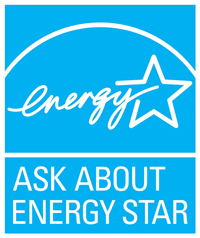
A furnace is usually a background player at home, keeping you warm across the cold winter months. It frequently won't be noticed until a malfunction appears.
One cause might be that your furnace has a cracked heat exchanger. It’s a potentially dangerous issue, so it’s critical to learn the evidence of a cracked heat exchanger and what you can do if you suspect that may be the problem.
What Is a Heat Exchanger in a Furnace?
A heat exchanger helps transition heat from the combustion chamber inside your furnace to the air that circulates throughout the air ducts. It typically does this using coils or tubes that heat up the air while serving as a barrier to keep byproducts created in the combustion chamber, called flue gasses, from getting out into your home.
Is a Cracked Heat Exchanger Dangerous?
Because of its central role, it isn't surprising that a cracked heat exchanger can be very dangerous. Cracks in the heat exchanger can enable dangerous gasses – like carbon monoxide, which can be lethal – to flow throughout your home.
For that reason, do NOT use your heating if you believe there's a crack in the heat exchanger, as this could make the entire household ill. Call an HVAC professional immediately if you are worried your furnace has a cracked heat exchanger that needs repair.
Four Signs of a Cracked Heat Exchanger:
- Furnace turns off: A cracked heat exchanger could cause your furnace to shut off.
- Odd Smells: If the air leaving your furnace has a strong chemical smell, it may be evidence gasses are seeping through cracks in your heat exchanger. These byproducts, which may smell like formaldehyde, are a common warning sign.
- Carbon monoxide alarm initiates or you notice health problems: If a cracked heat exchanger is emitting carbon monoxide inside your home, your carbon monoxide alarm may go off or household members might struggle with signs of carbon monoxide poisoning. Complications include headaches, dizziness, weakness, nausea, vomiting or feeling tired. If your alarm goes off or you feel unusually tired, leave the home as soon as you can and then call for help.
- Soot: If you spot black sooty accumulating around the exterior of your furnace, it’s another sign something may be seriously wrong.
What to Do if the Furnace Heat Exchanger is Cracked
If you worry your furnace has a cracked heat exchanger, contact a professional experienced in furnace installation Dresden right away so they can take a look at your system and, if necessary, start a furnace heat exchanger replacement. Costs will differ depending on the situation, but estimates often hover around $1,000 to $3,000.
Estimates aside, the good news is that heat exchangers are often covered by the warranty. You’ll want to confirm the warranty paperwork on your furnace, as while the warranty may not cover the entire cost of repairs, it can significantly reduce your bill.
How to Prevent a Cracked Heat Exchanger in Your Home
One of the most convenient ways to minimize the risk of problems in your furnace overall is with consistent furnace maintenance. Furnaces provide the best possible return on investment when they operate efficiently. Contacting a certified professional to inspect your furnace for broken-down parts, clogged filters and other common problems can keep you from getting a big bill later on.
It’s also helpful to take a look at your furnace filters every few months – it’s ideal some filters be changed every 90 days or sooner if they are dirty or grimy. While the filters aren't a part of the heat exchanger itself, the strain of pulling air through a clogged filter makes your entire furnace work harder to complete its job. And the harder your furnace needs to run, the more deterioration components like the heat exchanger will sustain.




